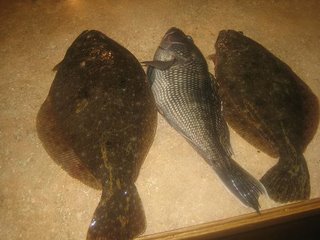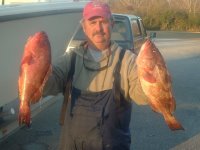I have had a fascination for the origin of words since my ole “disc jockey” days when I was young. I spent six years in the Navy and now of course enjoy recreational boating. Below are some terms in our culture that have roots in nautical life. These are just a sample as there are over 100 of them that I know of so far.
Buccaneer
From the French boucan, or grill, for cooking dried meat. Originally referring to those who hunted and smoked meat, it expanded to include those who ate it (or stole it) as well. Predominantly in the Caribbean in the 1650's, buccaneers differed from pirates in that they did not attack their own nation's ships.
Cup of Joe
Navy lore: Josephus Daniels (18 May 1862-15 January 1948) was appointed Secretary of the Navy by President Woodrow Wilson in 1913. Among his reforms of the Navy were inaugurating the practice of making 100 Sailors from the Fleet eligible for entrance into the Naval Academy, the introduction of women into the service, and the abolishment of the officers' wine mess. From that time on, the strongest drink aboard Navy ships could only be coffee and over the years, a cup of coffee became known as "a cup of Joe".
Deep Six
A fathom, the unit of measurement in most maritime countries for the depth of the sea, is six feet. Sailors used the term to refer to throwing something overboard and it has come to mean getting rid of something.
Filibuster
Buccaneers (see above) were known in England as filibusters. From the Dutch for vrybuiter (freebooter) translated into French as flibustier. It is now used as a political term meaning to delay or obstruct the passage of legislation (as opposed to sailing vessels) by non-stop speech making.
Footloose
The foot is the bottom of a sail, whether triangular or square, that is attached to the boom to keep it stretched. A sail that is not attached to the boom is said to be footloose and is very difficult to control as it moves with the wind. The term 'footloose and fancy free' refers to the motion of a footloose sail.
Knowing the Ropes
This is pretty obvious if you've ever seen a tall ship. It was such an important skill on sailing vessels that an honorable discharge from service was marked, at one time, with the term 'knows the ropes'. Land-side it still means a person with experience and skill.
Port and Starboard
Port and starboard are shipboard terms for left and right, respectively. Confusing those two could cause a ship wreck. In Old England, the starboard was the steering paddle or rudder, and ships were always steered from the right side on the back of the vessel. Larboard referred to the left side, the side on which the ship was loaded. So how did larboard become port? Shouted over the noise of the wind and the waves, larboard and starboard sounded too much alike. The word port means the opening in the "left" side of the ship from which cargo was unloaded. Sailors eventually started using the term to refer to that side of the ship. Use of the term "port" was officially adopted by the US Navy by General Order, 18 February 1846.
Shows his true colors
Early warships often carried flags from many nations on board in order to elude or deceive the enemy. The rules of civilized warfare called for all ships to hoist their true national ensigns before firing a shot. Someone who finally "shows his true colors" is acting like a man-of-war which hailed another ship flying one flag, but then hoisted their own when they got in firing range.
Took the wind out of his sails
Often we use "took the wind out of his sails" to describe getting the best of an opponent in an argument. Originally it described a battle maneuver of sailing ships. One ship would pass close to its adversary and on its windward side. The ship and sails would block the wind from the second vessel, causing it to lose headway. Losing motion meant losing maneuverability and the ability to carry on a fight.
Tight Lines to all!










